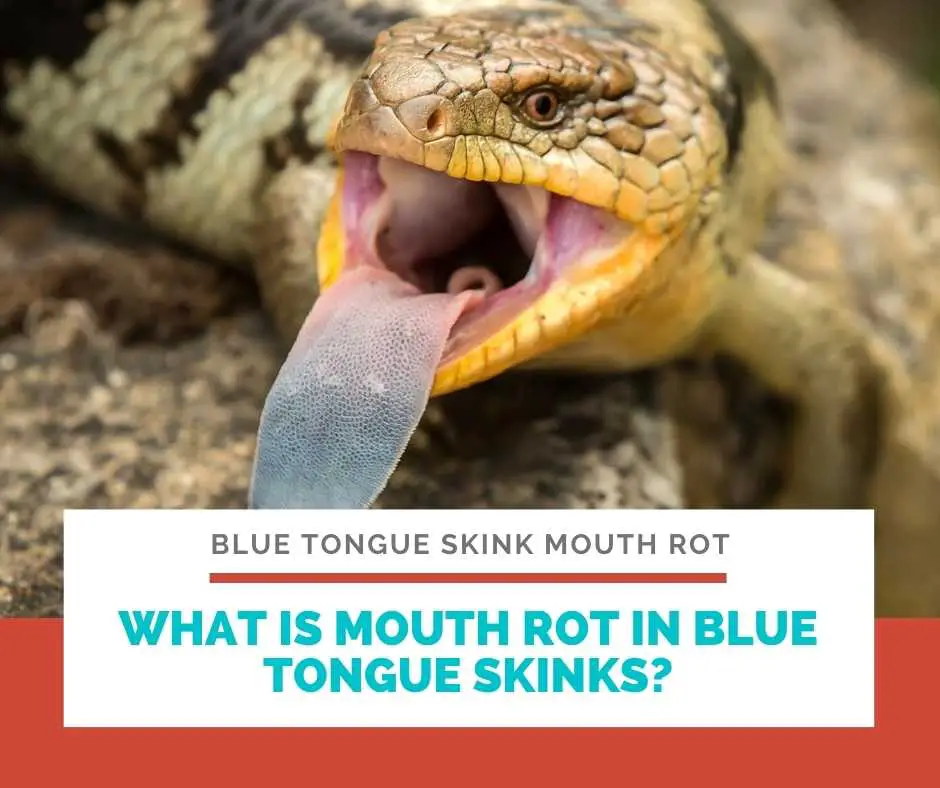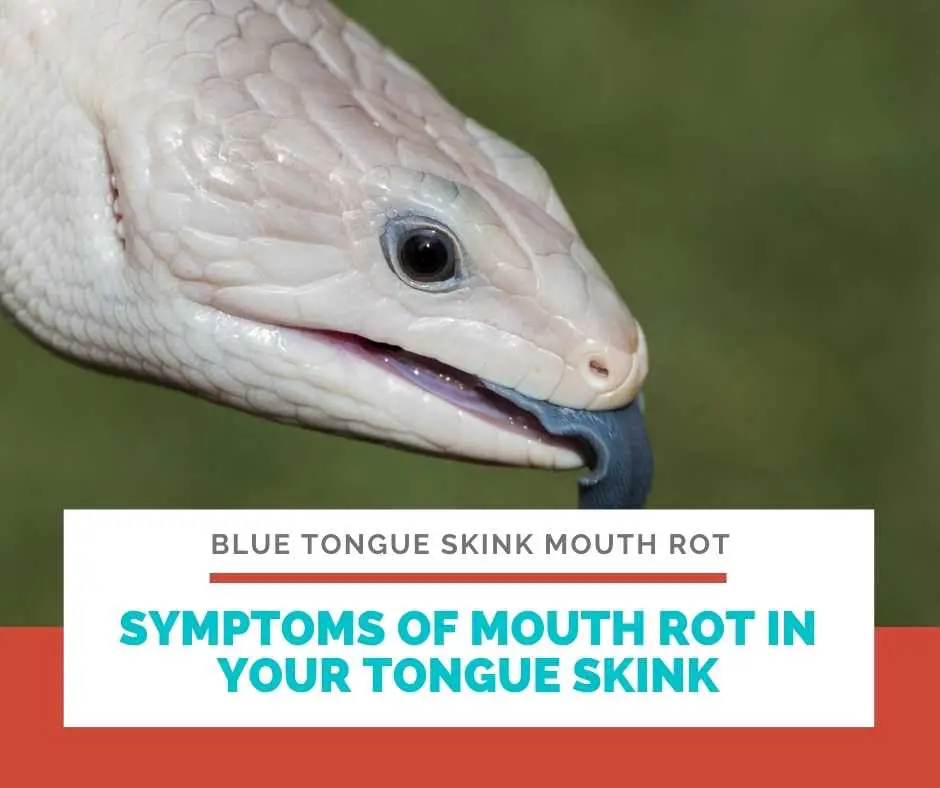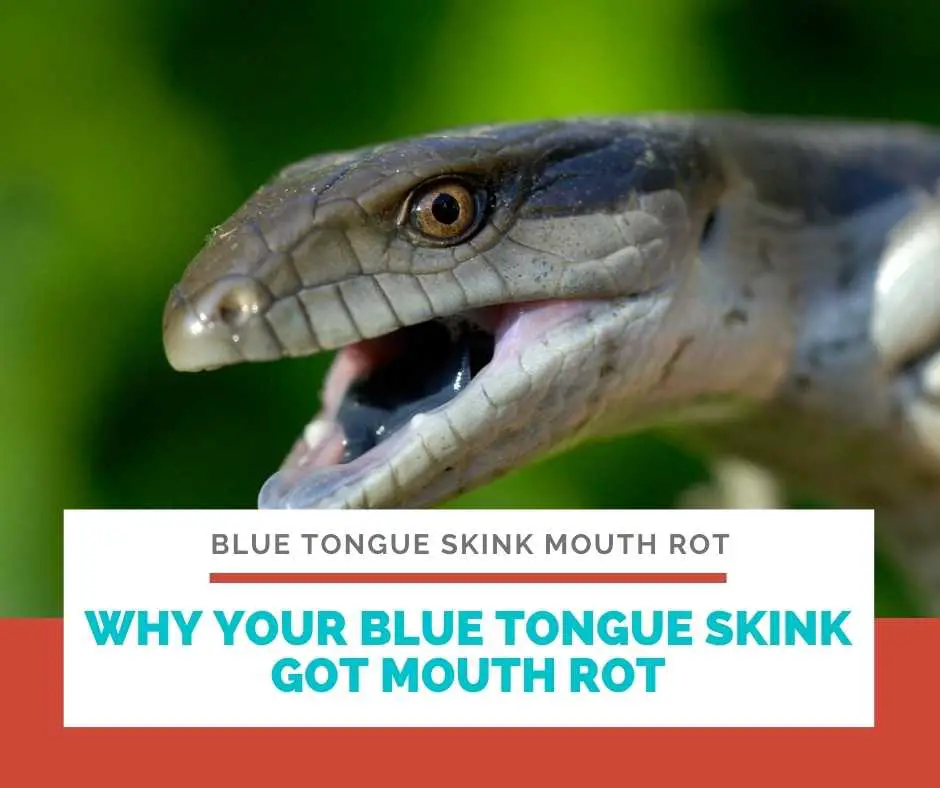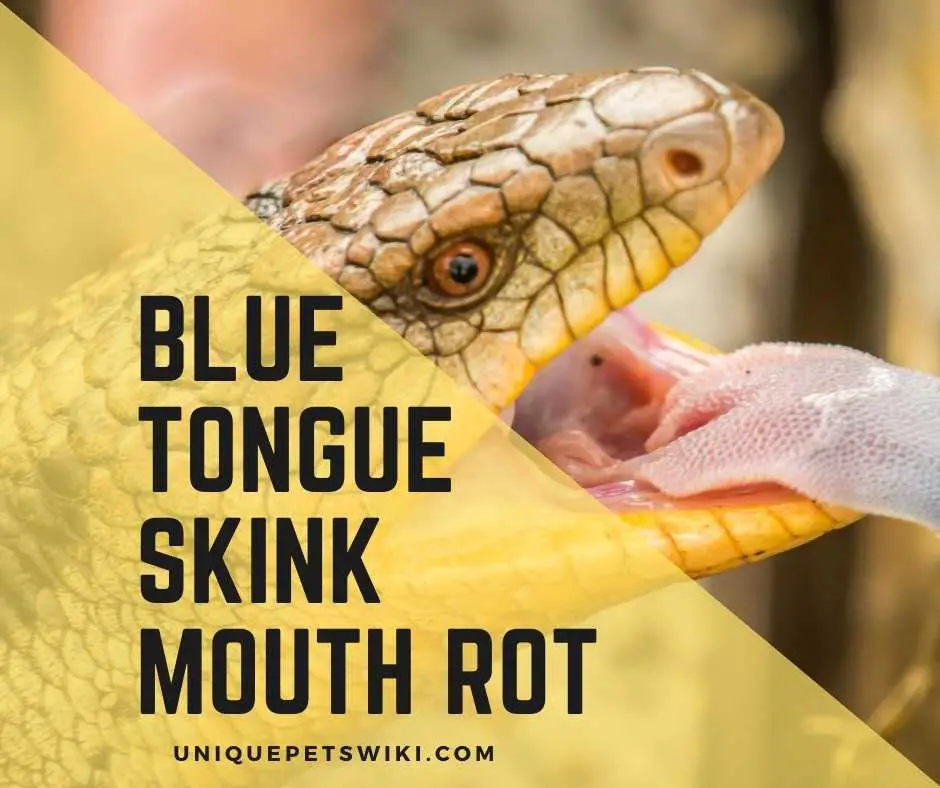Mouth rot is a bacterial disease that affects the oral cavity in reptiles. Most new pet owners might get overly worried when they see their blue tongue skink with this condition.
Thus, we came up with this article to help you understand what mouth rot is, what causes it, how to prevent it, and even how to treat it.
Are you a pet owner who has experienced this condition or a future pet owner who plans to purchase a blue tongue skink? Well, keep reading this article to understand how you can keep your blue tongue skink from mouth rot.
This article has been reviewed by Dr. Dilber. Read more about our knowledge control process here.
Contents
What is Mouth Rot in Blue Tongue Skinks?

Mouth rot is a common disorder that affects most blue tongue skinks, other pet lizards and reptiles. It is an inflammation of gum and mouth in blue tongue skinks.
Stomata or mouth rot is categorized in the group of upper digestive tract diseases. And, it includes pathologic illnesses that affect the esophagus, pharynx or oral cavity.
In captivity, it is one of the common health issues that affect blue tongue skinks. The good news is, with proper diet, habitation and sanitation, your blue tongue skinks can live a mouth rot free life.
Symptoms of Mouth Rot in Your Tongue Skink

Signs and symptoms of mouth rot in blue tongue skinks can vary depending on each stage of the infection.
Unlike other diseases in blue tongue skinks, it is not difficult to tell when your blue tongue skink is suffering from mouth rot. It is because the inflammation can easily be observed in your blue tongue skink mouth and gums.
Other signs present in blue tongue skink when they have mouth rot include:
- Excessive mucus in the mouth
- Foul smelling from the mouth.
- Lack of appetite
- Sniffing the food but not eating
- Reddening or swellings around the mouth
- Difficulty in closing the mouth
- Gingival swelling
- Lethargy
- Weakness
- Eroded mouth lining that sometimes develops a white or a yellow cottage cheese appearance.
- A rotting mouth when the infection becomes severe.
If you do not quickly treat the disease, it can advance further and even affect the jaws. When this happens, the blue tongue skink’s teeth become loose, and pneumonia may occur due to bacteria aspiration.
If the disease is not treated in time, the bacteria keep proliferating and multiplying in the mucosal cells. As a result, the disease can spread to the digestive system and respiratory tract. It can be fatal due to loss of appetite, weight loss, and weakness.
If you do not treat the infection at this stage, it can further advance and travel up affecting sinus near the eye.
At this stage, the eyes swell, and if not aggressively treated, it can cause blindness to the blue tongue skink.
Therefore, you should immediately seek medical attention from your pet vet; you suspect a mouth rot case in blue tongue skinks.
Why Your Blue Tongue Skink Got Mouth Rot

There are several reasons why your blue tongue skink might contract mouth rot. Luckily, all these reasons are human made errors that you can avoid. Ideally, mouth rot in blue tongue skinks and other reptiles come from low immune systems.
The immune system can occur due to:
Stress
When your blue tongue skink habitation does not match their natural habitats, they tend to get stressed quickly. It can be due to inadequate heating, too much or too little humidity, pest invasion, among other reasons.
Stress suppresses the immune system of blue tongue skinks and makes them susceptible to diseases and infection. When the immune system does not perform against foreign antigens, they can easily proliferate and multiply in epithelial and mucosal cells causing infections. So, it is necessary to remove the stress-inducing factors.
To keep your blue tongue skink healthy, you must ensure that you provide a suitable habitat.
You must include several things in your blue tongue skink’s cage to make their habitat comfortable and stress-free. These things include;
A Big Enclosure
Blue tongue skinks require a big enclosure that they can easily move around. To make your blue tongue skink feel comfortable enough in its cage, you must ensure that it is at least two times bigger than it is.
A Good Substrate
The substrate or blue tongue skink’s bedding should be at least 4 inches deep to enable your blue tongue skink burrow in when they need to. It should also contain adequate humidity, depending on your blue tongue skink species.
You must also ensure that the substrate is free from parasites such as mites. And, you should replace the substrate regularly and thoroughly clean the cage with reptile friendly disinfectants.
Basking Spot
Blue tongue skinks are highly likely to spend most of their day basking in the sun. Thus, even in captivity, you must ensure that you include a basking spot for them to warm their body during the day. The best temperature to include in the basking spot for blue tongue skinks is 95-1050F.
Cool Spot
When blue tongue skinks bodies become excessively hot, they require cooling off their body in an area where the temperature is lower than the warm side. The cold spot should have a temperature ranging between 70-800F.
Accessories
Accessories in blue tongue skinks enclosure are responsible for making the cage look similar to their natural habitat. They include hiding spots, background decors, basking rock, water, and food bowls. All these accessories are critical to make your blue tongue skink comfortable in captivity.
Poor Diet
Blue tongue skinks require a proper diet to stay healthy. Lack of vitamin C and improper calcium/phosphorus in blue tongue skinks can also be a primary cause of mouth rot.
The best ratio for calcium: phosphorus in blue tongue skinks diet should be 1:2, respectively.
You need to feed the food that is rich in vitamins and minerals. Besides that, you can add supplements to boost the immune system of blue tongue skink.
External parasites
External parasites are another primary cause of why your blue tongue skink might get mouth rot. Thus, you should always ensure that your blue tongue skinks cage is clean and free from parasites.
How to Treat Mouth Rot In Blue Tongue Skinks
Clean the Mouth
The first step when you spot mouth rot infections in your blue tongue skink, you should thoroughly clean the mouth and disinfect the wounds.
You can use Betadine antiseptic to clean the mouth and antibiotics for treatment. However, Betadine might not be available in your area, and thus, you should enquire from your pet’s vet for the best antiseptic.
Antiseptic mouthwash and solutions are available to treat invivo-inflammations. You need to wash the oral cavity of the blue tongue skink after every feeding.
You should never use any antiseptic that has alcohol contents as they can cause more harm to your blue tongue skink.
Visit Your Blue Tongue Skink’s Vet
As mentioned earlier, mouth rot tends to advance to the severity stage if you do not treat it soon. Thus, it is critical to visit your blue tongue skink’s vet for further diagnosis and treatment immediately if you notice the symptoms.
Remember that mouth rot might destroy your blue tongue skink’s gums and scales or even cause blindness.
Improve Your Blue Tongue Skink’s Living Settings and Diet
Like we said before, stress and trauma is the number one cause for mouth rot in blue tongue skinks. Thus, it is inevitable for you to improve their living conditions to ensure that they are comfortable and stress-free.
The best way to provide a stress-free life for blue tongue skink is by providing adequate temperature and humidity.
Additionally, you should provide them with crunchy rather than soft food to clean their teeth properly. The diet should include vitamin C, calcium, and phosphorus.
Don’t forget to regularly clean your blue tongue skinks cage and provide clean water and food. Replace the water every day or as soon as it gets contaminated.
Wrapping Up
Blue tongue skinks are hardy animals that can thrive in captivity. All they need is proper care, diet, and good hygiene. Thus, if you want your blue tongue skink to live a long life free from diseases, you must ensure that it is comfortable and stress-free.
Adequate temperatures and humidity, a healthy diet, and a clean enclosure can keep the mouth rot away from your blue tongue skink. Therefore, by following simple habitation rules, you can eliminate mouth rot in your blue tongue skink.

Calcium:Phosphorus ratio in their diet needs to be 2:1, exactly the opposite of what is written here.